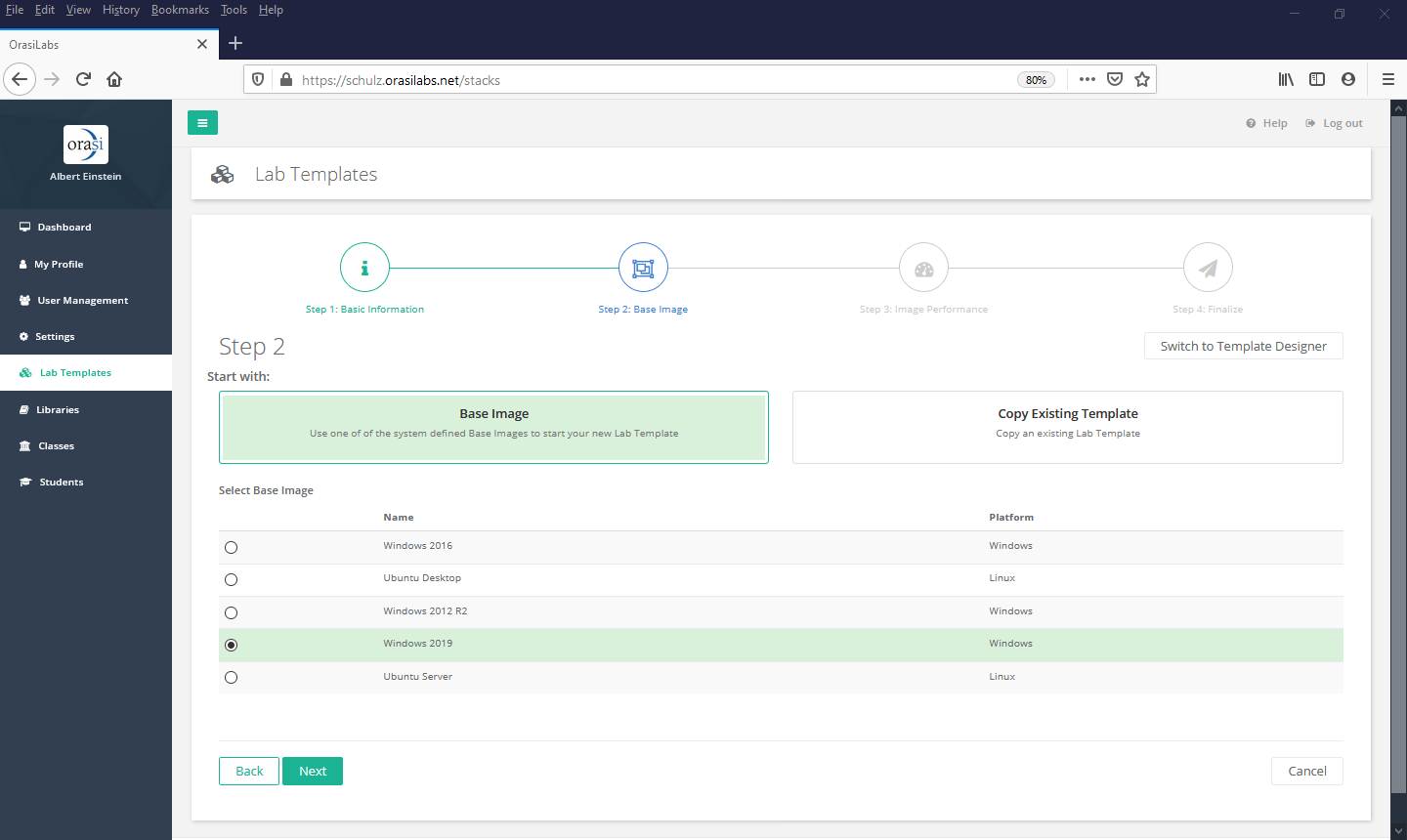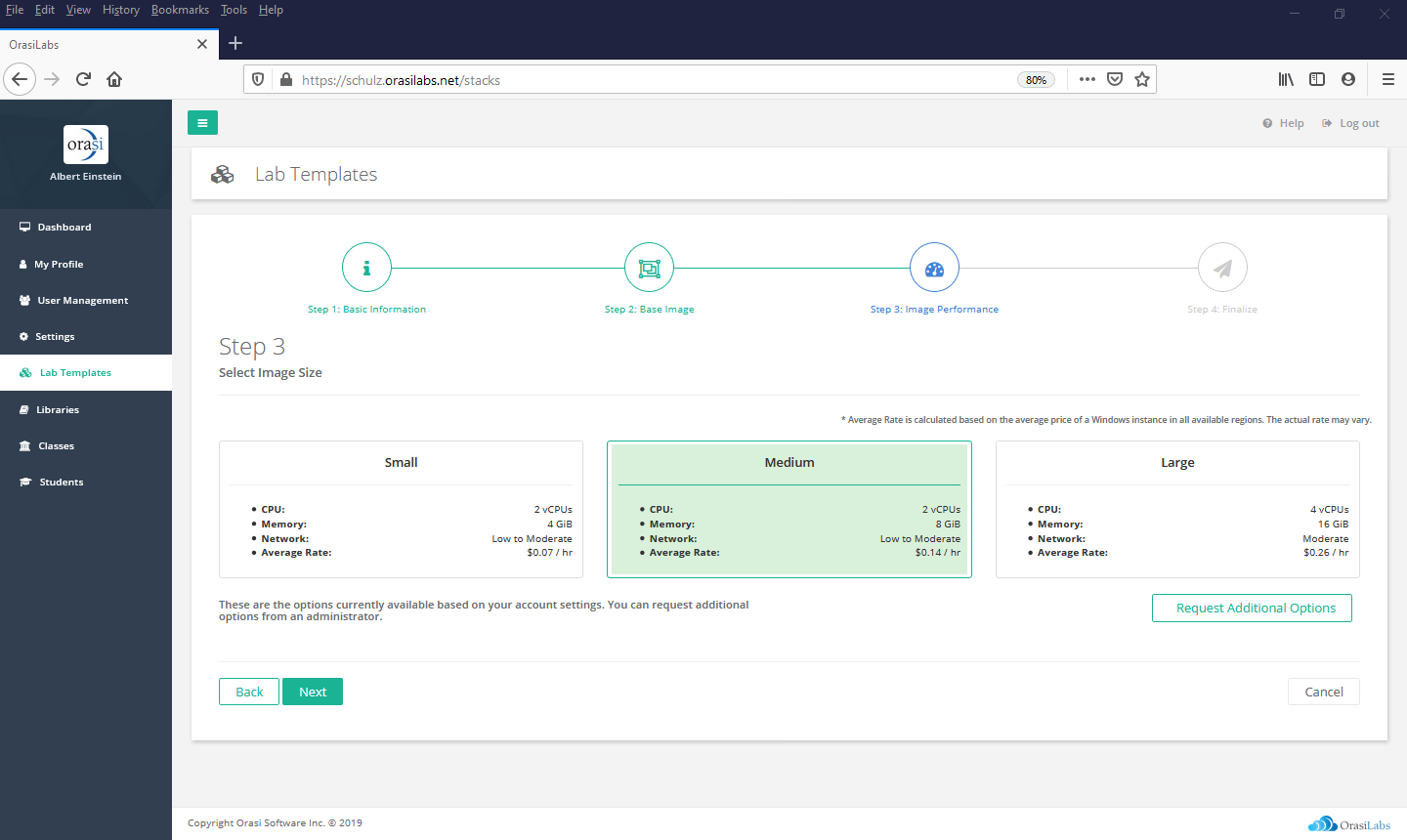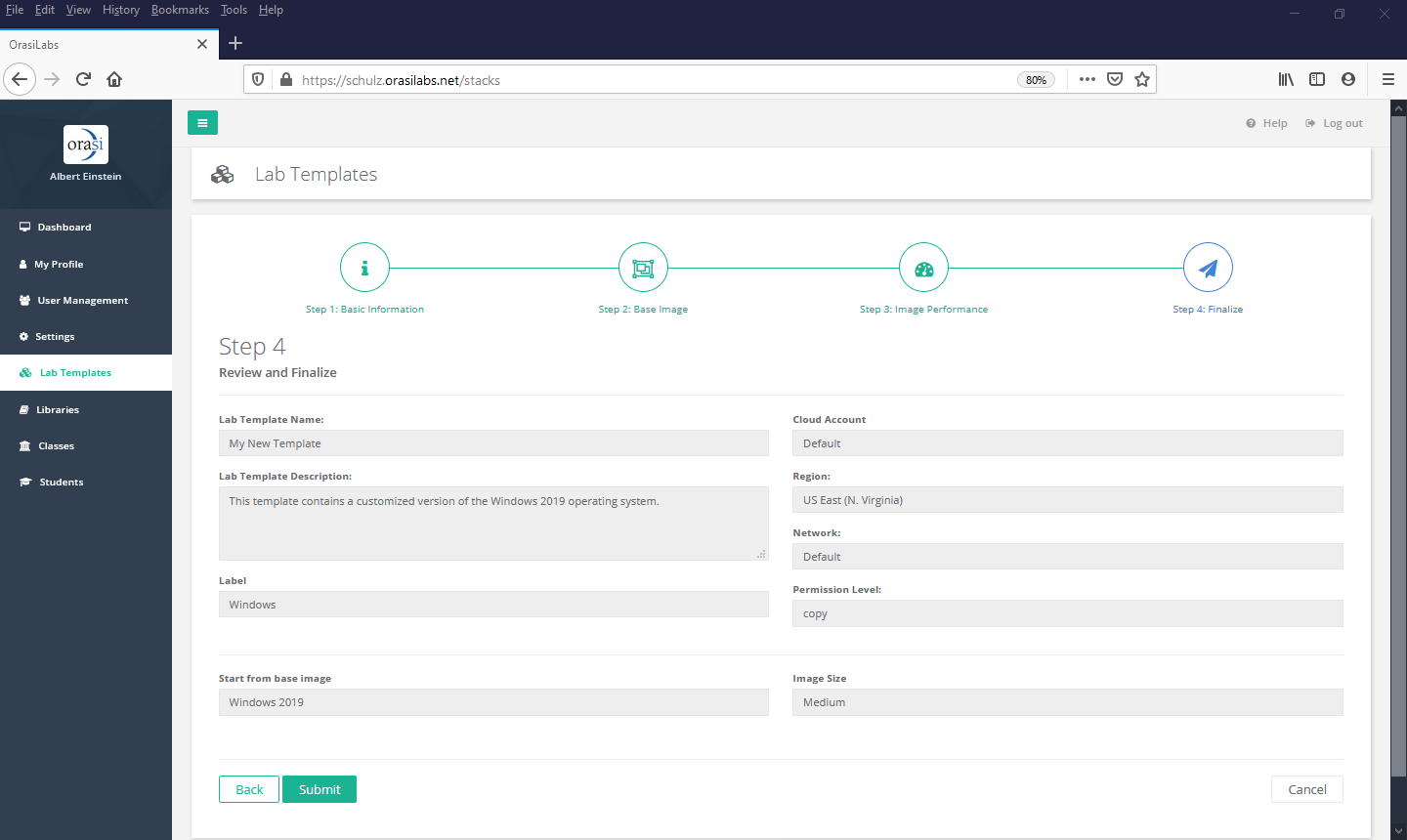How to create a new lab template using the built-in wizard.
Lab templates can be created in several ways. For single-image lab environments, the Lab Template Wizard provides a quick and easy way to build new lab templates from base images or from other lab templates. For more complex environments, however, the Lab Template Designer provides a graphical interface to define the required components.
For a brief example of the Lab Template Wizard, view the video below. For more detailed instructions, see the example below the video.
Using the Lab Template Wizard
Invoke the Lab Template Wizard

Invoke the Lab Template Wizard by selecting +Lab Template from the Lab Templates list. Alternatively, you can also invoke the wizard by selecting +Create on the Onboarding Status widget in the Dashboard.
Step 1 - Basic Information

First, provide basic information about the new lab template object, including the name, and description. The lab template name must be unique within the OrasiLabs tenant in which you're working.
You must also specify the access permissions to apply to this lab template. These permissions govern who can view, copy, or modify the template once it's created. The default permission is Copy.
You can also use this step to create and/or assign labels to the template for easy identification and filtering. These labels will be displayed in the Lab Templates list once the template is created.
Finally, select Next to advance the wizard.
Step 2 - Selecting the Base Image

The Lab Template Wizard can create a new template from an existing base image or from another lab template. In either case, you need only select the source image from the list provided.
Please keep in mind that the new lab template being created will be a duplicate of the source image as it exists at that moment. Later changes to the source image will not be reflected in the new lab template once the Lab Template Wizard is finished.
Once a selection is made, select Next to advance the wizard.
Step 3 - Image Performance

Lab template performance characteristics identify how much resource is allocated to the virtual machine. Each available instance size specifies a number of CPUs, an amount of RAM, the storage type, and the network performance plan. Instance size characteristics directly determine the cost to run the image.
In general, the larger the instance size, the more expensive the image will be to run. Keep in mind that each instructor and student will be running their own dedicated environment, so image costs are multiplied by the number of participants.
Depending on the settings in your OrasiLabs tenant, you select the desired instance size from either a Small/Medium/Large dialog or from a list of available AWS instance sizes. Available instance sizes are configured by an administrator in Server Policies under Settings. Select Request Additional Options to contact your OrasiLabs administrator if you need an instance size that is not currently available.
Once a selection is made, select Next to advance the wizard.
Step 4 - Finalize

The last step is to review and finalize the lab template definition. The Lab Template Wizard will display all previous option selections. If any of the options don't look right, select Back to change selections made in previous steps.
Once the options look correct, select Submit to create the new lab template.

Congratulations! You've just created a new lab template. You can now use this lab template as the basis for other templates or to deploy a new class.
Where to go next...
Lab Template Overview
Creating a Lab Template with the Lab Template Designer
Copying an existing Lab Template
Customizing a Lab Template
Publishing a Lab Template
Lab Template Permissions
Lab Template Labels
Deleting a Lab Template
Was this article helpful?
That’s Great!
Thank you for your feedback
Sorry! We couldn't be helpful
Thank you for your feedback
Feedback sent
We appreciate your effort and will try to fix the article